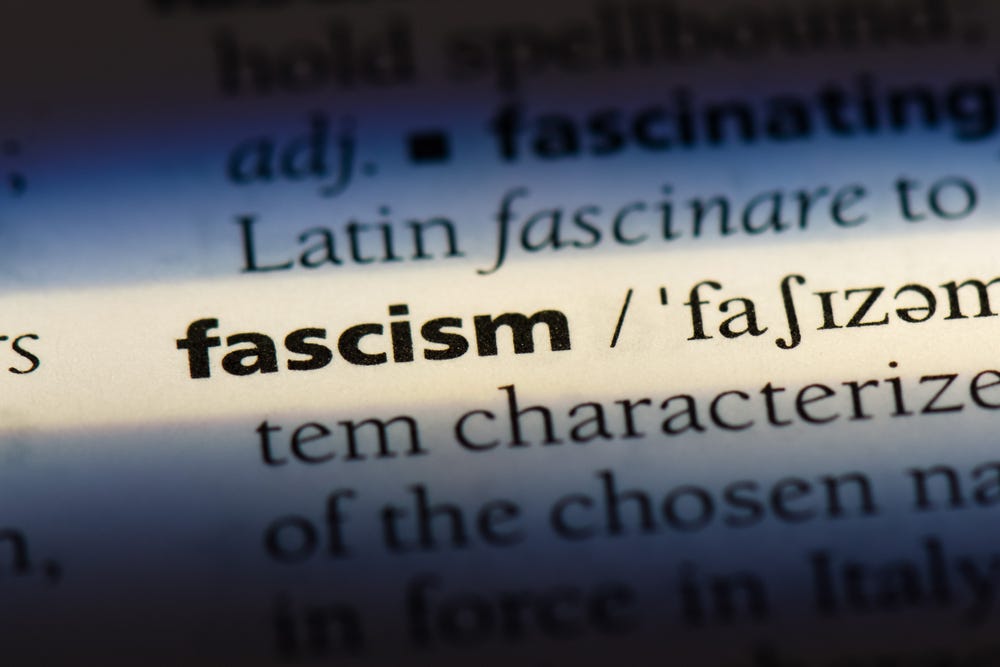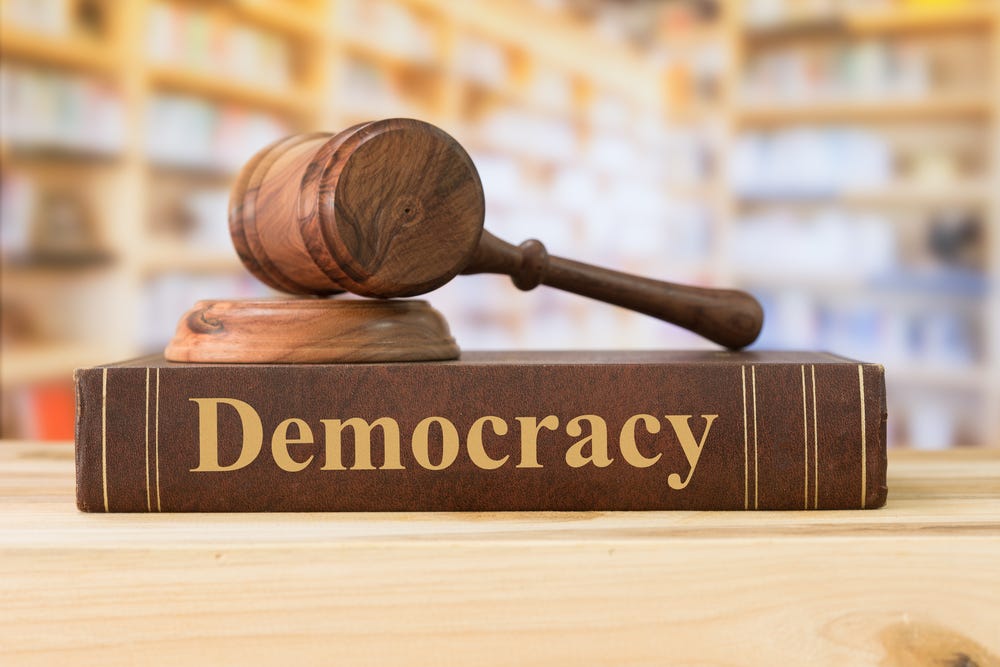E-Pluribus | January 6, 2022
The different faces of fascism; was January 6th a true threat to our democracy; and speaking of democracy, how to defend it.
A round up of the latest and best writing and musings on the rise of illiberalism in the public discourse:
Jonah Goldberg: What I Got Wrong About Fascism
In 2008, Jonah Goldberg’s book Liberal Fascism was released, and Goldberg has taken some heat over time for his contention that the danger of fascism in the United States is only on the Left. Although he largely stands behind the book, this week Goldberg acknowledges that Donald Trump and many of his supporters have since proved him wrong on that point.
I argued that, contrary to generations of left-wing fearmongering and slander about the right’s fascist tendencies, the modern American right was simply immune to the fascist temptation chiefly because it was too dogmatically committed to the Founders, to constitutionalism, and to classical liberalism generally.
Almost 13 years to the day after publication, Donald Trump proved me wrong.
Academics tend toward needless complication when trying to define fascism. Roger Griffin defined it as “a genus of political ideology whose mythic core in its various permutations is a palingenetic form of populist ultra-nationalism.” Roger Eatwell argued that fascism’s “essence” is a “form of thought that preaches the need for social rebirth in order to forge a holistic-national radical Third Way.” Emilio Gentile defined fascism as “a mass movement, that combines different classes but is prevalently of the middle classes, which sees itself as having a mission of national regeneration, is in a state of war with its adversaries and seeks a monopoly of power by using terror, parliamentary tactics and compromise to create a new regime, destroying democracy.” Other definitions emphasize a fixation with manliness and struggle, cults of personality, obsession with conspiracies both foreign and domestic, and the decadence of liberal capitalism and democracy.
Break definitions like these down into a checklist and replay the events of January 6 and you’ll get writer’s cramp checking the various boxes, starting with Ali Alexander’s tweet at 1:13 a.m., “First official day of the rebellion.” A couple hours later, a leader of QAnon announced that Mike Pence was leading a coup to stab the president in the back and linked to a blog post calling for “the immediate arrest of [Pence], for treason.” The speakers at the Save America rally hit all the themes. John Eastman peddled his cockamamie Americanized version of “parliamentary” tactics to steal the election. Rudy Giuliani called for “trial by combat.” Mo Brooks asked the mob to “fight for America” and the crowd chanted, “Fight for Trump! Fight for Trump! Fight for Trump!”
[…]
Now, you may think this isn’t fascism. And I’ve spent enough time arguing about fascism to imagine a dozen counterarguments that might have some merit. But you can’t convince me that this didn’t indefensibly move the Overton window in a fascist direction.
Like so much that defined the Trump years, January 6 represented the abandonment of the dogma that I believe immunized conservatism from the fascist temptation and rendered glib accusations of fascism at small-government conservatives so idiotic and slanderous. I believed that conservatism was too committed to the Constitution, to classical liberalism, to the rule of law, to tolerate the use of extralegal violence and mob intimidation. I still believe that those dogmas are a bulwark against fascism, or a tyranny that goes by any other name. What I no longer have faith in is the right’s commitment to those dogmas.
Read the whole thing.
Wall Street Journal Editorial Board: Democracy Isn’t Dying
While decrying the January 6th Capitol riot as a “national disgrace,” the editorial board of the Wall Street Journal tamps down fears that it constituted a serious threat to our democracy. While we should never be complacent about the future of our nation, Trump’s efforts to stay in office, numerous, varied and delusional, were uniformly and wildly unsuccessful.
They also didn’t come close to overturning the election. The Members fled the House chamber during the riot but soon returned to certify the electoral votes. Eight Senators and 139 House Republicans voted against certifying the electoral votes in some states, but that wasn’t close to a majority.
The true man at the margin was Mike Pence. Presiding in the Senate as Vice President, he recognized his constitutional duty as largely ceremonial in certifying the vote count. He stood up to Mr. Trump’s threats for the good of the country and perhaps at the cost of his political future.
In other words, America’s democratic institutions held up under pressure. They also held in the states in which GOP officials and legislators certified electoral votes despite Mr. Trump’s complaints. And they held in the courts as judges rejected claims of election theft that lacked enough evidence. Democrats grudgingly admit these facts but say it was a close run thing. It wasn’t. It was a near-unanimous decision against Mr. Trump’s electoral claims.
Read it all here.
Nicholas Grossman: How to Defend American Democracy
In a long piece at Arc Digital, Nicholas Grossman says that January 6th was indeed a warning about the future of our democracy, but that it shouldn’t end there. Grossman says concrete actions in a myriad of areas (federal laws, state election administration, the media, the military, accountability for the rioters, etc.) are needed to prevent further erosion to the core principles on which our nation is founded and functions.
We’re dealing with people who fundamentally do not believe in Constitutional democracy, including the acceptance of electoral loss. Whether opposed to democracy on principle or caught up in a persecution complex that rationalizes undemocratic measures, the effect is the same. Though they may sometimes follow institutional rules, that’s merely strategic; they do not respect them, and will cheat if they can. A traditional horserace frame is the wrong way to see this. It’s a contest beyond the normal rules — a fight over the rules themselves.
[…]
If Donald Trump or someone following in his footsteps wins the White House in 2024, that’s a different sort of problem. Trump’s presidency marked a period of democratic backsliding, similar to that seen in Turkey, Hungary, and Poland, where a leader wins office democratically and then abuses power to erode institutional checks-and-balances and manipulate future elections. A second Trump term would almost certainly bring more of that, along with another attempt to stay in power beyond legal limits, subverting American democracy from within.
But winning a fair election is a legitimate Constitutional outcome, and pro-democracy Americans are bound to respect it, much as Hillary Clinton and Barack Obama recognized Trump’s win right after the 2016 election, despite various concerns. If the Republican nominee wins, Republican efforts to subvert the outcome are a moot point.
Read it all.
Around Twitter
Andrew Sullivan posted audio of his immediate response to the Capitol riot from last January:
Speaking of riots, here’s Kmele, making the distinction between democracy and mob rule (I looked it up):

J.K. Rowling’s detractors are trying to open up a new front in their offended offensive against the author:


And finally, via Peter Boghossian, it must be getting more difficult for some members of the American Philosophical Association to remain philosophical about things like this:










